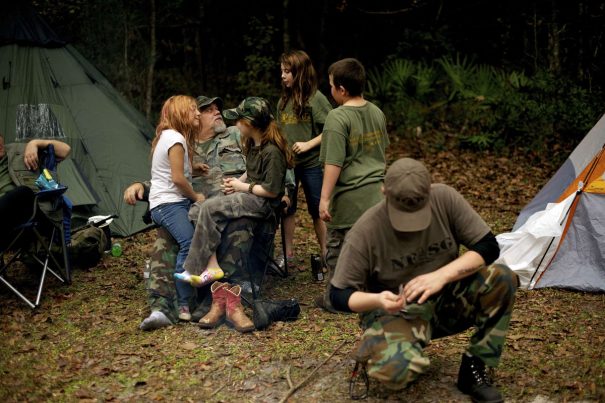Camp security measures to keep you safe from intruders
Tuesday, March 22, 2016 by usafeaturesmedia
http://www.bugout.news/2016-03-22-camp-security-measures-to-keep-you-safe-from-intruders.html

(Bugout.news) The situation in our modern world has gone south and regardless of the reason you, your family and those who agreed to bugout with you have all done so.
Now that you’re at your bugout site and you’ve set up camp, next comes camp security, a vitally important function that will require rotating guard shifts, so to speak, and will involve nearly all of your group.
You have assume that someone, at some point, is going to find you, no matter how much litter, light and noise discipline you use (and you employ them all at all times). When that happens, they will be one of two kinds of people – those who are like you and merely wanting to survive the madness, or those who are hell-bent on killing you and taking your supplies. You have to be on the look-out for both.
That will entail learning some basic camp security techniques and measures so that you can hit the ground running, so to speak, once you arrive to your site and begin to set up.
Defense, first and foremost
Whoever is on guard should never assume that anyone who approaches them openly, who is not in your group, is friendly, no matter how they may act. Very often an enemy will attempt to throw you off guard by using a “frontal approach” – that is, sending a member of their group directly up to one of your guards, hands up and with no weapons, to engage the guard in friendly conversation while other members of the enemy group move to flank your guard and take him/her out. Whoever engages the person must always maintain eye contact with them and perform a visual check of them as they approach, paying special attention to any weapons they may have. Also, whenever a guard post has an encounter, it should be reported immediately to camp members (more on that below).
For this and other reasons, then, you should never station a single guard to watch over your camp. Guard posts should be manned with a minimum of two people, armed, though three would be better – someone to engage and frisk the person who has arrived and another guard or two whose job will be to keep watch over the one guard doing the searching and frisking, while surveying their surroundings to prevent anyone from sneaking up on the post.
Concealment

Stationary guard posts are targets, plain and simple, as is any fixed position. So if you must have a stationary post (and chances are good that you will) keep them out of sight. If you’re guarding an approach to your campsite – a trail, a road or a path – conceal your guard post and its occupants so that anyone who arrives will not know that the approach path or road is under surveillance. You always want to see “them” before they see you.
Patrolling
It will also be necessary to install a roving patrol – again a group of at least three people, armed – whose job will be to quietly move about a camp perimeter in between guard posts, to prevent an enemy group from infiltrating. A seasoned, experienced enemy will like have found your camp and kept it under surveillance for some time before making a move, with the objective of learning your habits. That includes observing how well-protected you are. But the best way to find out that you’re under observation is to continually and actively patrol your perimeter, which will keep anyone who wants to do you harm at bay.
Quick reaction team
This is your “ace in the hole” when it comes to camp security. This is a group that is kept on ready reserve, so to speak, able to react to a threat on a moment’s notice, wherever that threat comes from. These folks don’t have to be kept out of sight, per se; they could be people who, to the unknowledgeable eye, are simply going about their daily tasks at your camp, but who are ready to take defensive actions if trouble arises.
If you don’t have enough people for a roving patrol and a quick reaction team, then ditch your patrols, form your reaction team and keep your guard posts close to camp so you can defend and protect them easier.
Guard post location
As mentioned above, guard posts should be concealed, but they also need to be effective. If you can, set them up on higher ground (not on a peak, though, otherwise you’ll silhouette yourselves and become observable) so that you have a better view of the approach you’ve got under surveillance. Use whatever ground cover you can to camouflage your post and your clothing.
Communications
Communicating between posts and between people in your main camp will be important. Guard posts providing security can’t do much good if they aren’t able to warn the group of an approaching threat. For this reason, make sure that part of your emergency preparations include obtaining two-way radios. Remember, you can use solar panel technology to keep them charged.
These are some very basic techniques you can employ to provide your bugout location with some security. Not every situation is the same, though, so you may have to make some adjustments to this fundamental plan. Just always remember the goal is to protect yourselves and what you have from those who want to take it from you and, perhaps, deliver some bad intentions to you and yours. Cover, concealment, surprise, and backup plans will all go a long way towards helping you stay safe and ride out the storm.
Bugout.news is part of the USA Features Media network.
Tagged Under: Tags: camp, Communications, patrolling, security, survival

